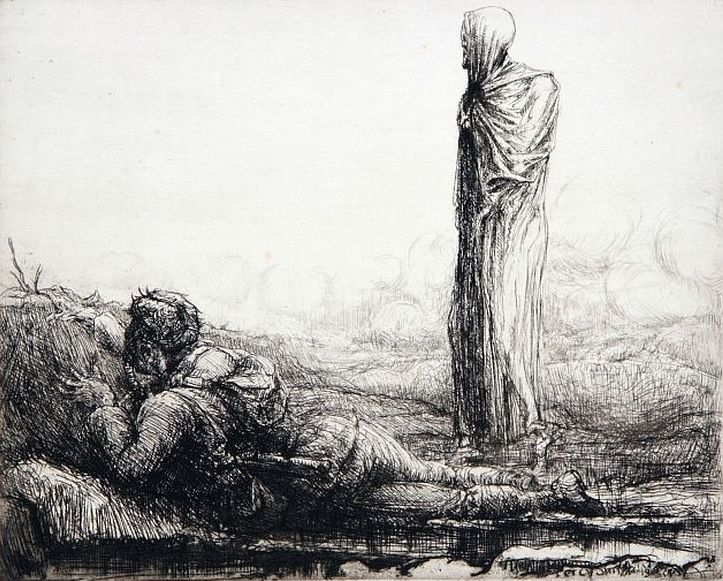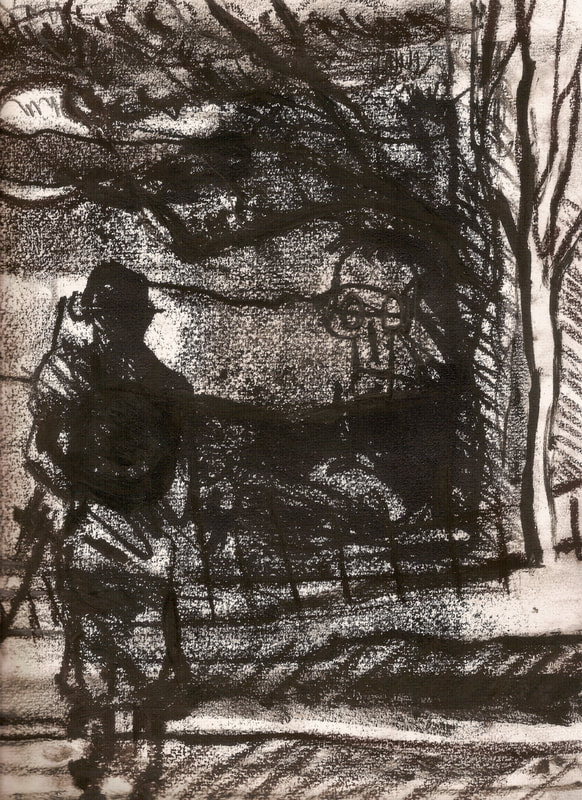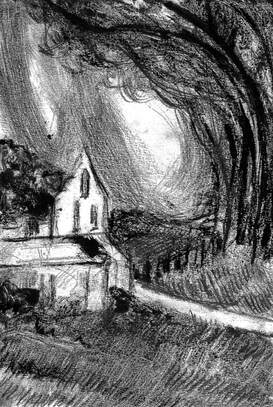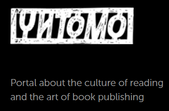Why Read War Poetry?
by Constance Ruzich
“War, other than love, is the great human subject, is it not?”
—Lisa McCabe, Canadian poet[i]
On a grey afternoon in my university classroom, a student raised her hand and asked, “Why should we read war poetry?” The question should have been easy to address; I frequently teach courses in war literature, and I’ve edited an anthology of First World War poetry. But it’s a question that is seldom asked, a question that raises a host of other questions: What is war poetry? How do we define war? Why should we read poetry at all?
There is a long and rich historical tradition across cultures of valuing poetry, but much less attention has been given to examining or understanding that worth. In their exploratory study “Measuring the Value of Engaging with Poetry in Lifelong Learning and Development,” Rumbold et. al have found that “the value of poetry, and of literature more widely…has hitherto been under-researched.”[ii] But more specifically, what might be the value of reading war poetry? The introduction to The Faber Book of War Poetry states, “War and the business of fighting have occasioned, if not more poetry than any other activity of mankind, then a large part of what has endured across the ages and continues to matter to us.”[iii] As it turns out, the business of war and fighting appears to be a one of the most characteristic of human activities. In 2003, Chris Hedges wrote, “Of the past 3,400 years, humans have been entirely at peace for 268 of them or just 8 percent of recorded history.”[iv] One reason, then, to read war poetry is to better understand war.
The Roman poet Horace (who over 2,000 years ago penned the line “Dulcē et decōrum est prō patria mōrī”[v]) argues in Ars Poetica that the aim of the poet is to inform and delight; dulce et utile is often referred to as the Horatian platitude. Anthropologist Julia Riberio explicitly addresses poetry’s value in informing; she argues that war poetry should be more widely appreciated as a historical source, for it provides “not only a potentially accurate model of the experience of the conflict, but also the poetic gesture … [is] capable of changing that experience itself and therefore worthy of study as a practice as well as a discourse.”[vi] Trench lyrics of the First World War, grounded in the physical and psychological experience of the trenches, played a significant role in shaping responses to the war and continue to influence the way it is remembered and mythologized. Women’s war poetry is also relevant because often in women’s poems, war escapes its conventional boundaries. It is a myth that women did not experience the physical horror of the First World War: French and Belgium women’s homes were overrun by invading armies, British women were killed in bombing raids, and Armenian women were massacred along with men and children. The first industrial world war challenged the concept of the home front as a safe zone. British suffragist and pacifist Helena Swanwick wrote in 1915, “War is waged by men only, but it is not possible to wage it upon men only. All wars are and must be waged upon women and children as well as upon men.”[vii] Although most women lacked first-hand experience of the battlefront, it is impossible to deny that women had first-hand experience of the Great War. In her poem “A Memory,” Margaret Sackville writes,
There was no sound at all, no crying in the village,
Nothing you would count as sound, that is, after the shells;
Only behind a wall the low sobbing of women,
The creaking of a door, a lost dog—nothing else.[viii]
Women’s war poetry informs us by frequently challenging the idea that war is restricted to the combat zone.
Horace’s comments on the aims of the poet may also be translated as instruct and delight, for utile also suggests the act of advising or warning, giving all poetry, but perhaps particularly war poetry, an important ethical function. British poets Philip Sidney and Percy Shelley were convinced that poetry is “uniquely positioned to effect the moral improvement of mankind.”[ix] Tennyson’s “Charge of the Light Brigade” might be considered such an improving poem, extolling the traditional importance of duty and the honor that follows obedience:
Their’s not to make reply,
Their’s not to reason why,
Their’s but to do and die:
Into the valley of Death
Rode the six hundred.[x]
Nearly sixty-five years after Tennyson first published “Charge of the Light Brigade,” in the midst of a very different conflict, the ethical lessons to be drawn from war were strikingly different. Wilfred Owen, one of the best-known poets of the First World War, wrote in his 1918 draft preface to poems that he did not live to see published,
My subject is War, and the pity of War.
The Poetry is in the pity.
Yet these elegies are to this generation in no sense consolatory. They may be to the next. All a poet can do today is warn. That is why the true Poets must be truthful.[xi]
Vehement in their exposure of falsehoods, the last lines of Owen’s poem “Dulce et Decorum Est” sound an urgent warning and moral directive:
If you could hear, at every jolt, the blood
Come gargling from the froth-corrupted lungs,
Obscene as cancer, bitter as the cud
Of vile, incurable sores on innocent tongues,--
My friend, you would not tell with such high zest
To children ardent for some desperate glory,
The old Lie: Dulce et decorum est
Pro patria mori.[xii]
In a recent post on social media discussing value of war poetry, one reader responded, “As a youngster, I could not muster any enthusiasm for poetry because I thought it was just mush for wooing girls. But it was “Dulce et Decorum” by Owen and “Concert Party: Busseboom” [by Edmund Blunden] that struck me like a thunderbolt, really laid bare that poetry could bludgeon and stab.”[xiii]
Poetry’s hard-hitting moral lessons may also influence social realities and cultural responses to war. Matt McGuire, senior lecturer in English literature at Western Sydney University asks, “Can literature contribute to peace building, helping us learn lessons from these ‘new’ conflicts in the modern era?”[xiv] One-hundred years earlier, the foreword to the 1921 collection Poems of the War and the Peace fervently believed this to be the case:
…the ideal of permanent peace, of great Peace based on justice, appears increasingly doubtful of achievement. And because of this gulf between what men fought for and what their rulers ordained, attention to the poetry which presents the experiences and ideals of men in war seems of pressing significance.[xv]
Poetry, in sharing an individual’s “experiences and ideals” of war, pressingly and significantly engages readers’ imaginations. Those who read war poetry often encounter intimate views of tragedy and destruction that can be otherwise too immense to grasp. Although poetry may be ill-suited for understanding military strategy, logistics, and vast troop movements, it compellingly humanizes the experience of war. Some of the most memorable war poems invite readers to visualize a single death, such as Randall Jarrell’s 1945 poem “The Death of the Ball Turret Gunner” and its haunting last line, “When I died they washed me out of the turret with a hose.”[xvi] Jarrell’s poem acknowledges the stark irony of the apocryphal quotation often attributed to Stalin, “One man’s death is a tragedy; a million deaths is a statistic.” By portraying personal views of war quite different from the strategic reports of news accounts, war poetry engages readers’ cognitive and affective responses. War reporting and propaganda insist on choosing sides and de-humanizing the enemy, but war poetry has the potential to dismantle starkly drawn dichotomies. In its first stanza, W.B. Yeats’s “An Irish Airman Foresees His Death” offers a complex view of one man’s motivations for the fight:
I know that I shall meet my fate
Somewhere among the clouds above;
Those that I fight I do not hate
Those that I guard I do not love….[xvii]
Similarly, French war poet René Arcos explores the complicated intertwining of enmity and grief in this excerpt from “The Dead” (Les Morts…):
The widows’ veils
In the wind
All blow the one way.
And the mingling tears
Of the million sorrows riverwards
All flow the one way.
Rank by rank, shoulder to shoulder
The bannerless, unhating dead,
Hair plastered down with clotted blood,
The dead all lie the one way.[xviii]
In Arcos’s 1919 poem, grief unites survivors, and the “bannerless, unhating dead” have surrendered their lives and their allegiances to form new ranks that march across the horizons of war cemeteries.
If war poetry can inform, instruct, and perhaps contribute to the cause of peace, can it also offer readers the delight (dulce) that Horace claimed for this creative art? The Latin term dulce literally means sweet to the taste; used metaphorically, it suggests experiences that are agreeable and enjoyable. American poet Billy Collins identifies six pleasures of poetry: the pleasure of dance (the rhythms of language), of sound, of travel (the ability to transform and transport), of metaphoric connection, of meaning, and of companionship (found in memorizing and internalizing a poem).[xix]
War poetry is a serious pleasure, but it is replete with the enjoyments common to the genre. Edward Thomas’s 1916 poem “Rain” transports readers to the darkness of the Western Front, as its rhythms, sounds, and metaphors open a space for readers to join with Thomas in inhabiting deep loneliness:
Rain, midnight rain, nothing but the wild rain
On this bleak hut, and solitude, and me
Remembering again that I shall die
And neither hear the rain nor give it thanks
For washing me cleaner than I have been
Since I was born into this solitude.[xx]
Poems such as Thomas’s are always greater than the summarization of the ideas they explore; their patterning of sound and symbol are immersive experiences that draw us out of ourselves and link us with others’ worlds. One hundred years after it was written, Amy Lowell’s poem “September. 1918” reaches across time and speaks to us in our own age of anxiety:
September. 1918
This afternoon was the colour of water falling through sunlight;
The trees glittered with the tumbling of leaves;
The sidewalks shone like alleys of dropped maple leaves,
And the houses ran along them laughing out of square, open windows.
Under a tree in the park,
Two little boys, lying flat on their faces,
Were carefully gathering red berries
To put in a pasteboard box.
Some day there will be no war,
Then I shall take out this afternoon
And turn it in my fingers,
And remark the sweet taste of it upon my palate,
And note the crisp variety of its flights of leaves.
To-day I can only gather it
And put it into my lunch-box,
For I have time for nothing
But the endeavour to balance myself
Upon a broken world.[xxi]
—Amy Lowell
Underneath the fragmented, uneven rhythms of Lowell’s poem, anapests sound a hopeful beat, while liquid consonants and sibilants whisper of comfort. The poem’s images contrast the bleakness of life during wartime with the colour of an afternoon when houses laugh and small boys play at pretend in a park. A brief space in time may be tasted then tucked away as a memory to be savored in some future day of peace. The poem stitches together a season of fading beauty and death with children and fragility, preserving a precious moment of wholeness in a broken world.
Why then read war poetry? In reading war poems, we pause to contemplate the sweetness of that which is lost; we celebrate the temporal joys of life as they are highlighted against a background of death and sorrow; we find hope that even in the darkest periods of human history, poets have shaped beauty from despair as they inform, instruct, and delight.
[i] @LAHMCCABE. “For me it has been mostly to gain a view into the human heart and human mind under great duress and hear how language carries their cry and their message. And in the listening be a witness to human suffering. War, other than love is the great subject is it not?” Twitter, 1 Oct. 2020, 5:34 a.m., https://twitter.com/LAHMCCABE/status/1311600354056974336?s=20.
[ii] Kate Rumbold et al, “Measuring the Value of Engaging with Poetry in Lifelong Learning and Development,” 2015, p. 4.
[iii] Kenneth Baker, “Introduction,” The Faber Book of War Poetry, edited by Kenneth Baker, Faber and Faber, 1997, p. xxiii.
[iv] Chris Hedges, What Every Person Should Know about War, Free Press, 2007, p. 1.
[v] Horace, Odes III, edited by David West, Oxford UP, 2002, p. 22.
[vi] Julia Ribeiro, “‘Knowing that you will understand’: The Usage of Poetry as a Historical Source about the Experience of the First World War,” Alicante Journal of English Studies, vol. 31, 2018, p. 117.
[vii] Helena M. Swanwick, Women and War, Union of Democratic Control, 1915, p. 1.
[viii] Margaret Sackville, “A Memory,” The Pageant of War, Simpkin, Marshall, Hamilton, Kent, [1916], p. 32.
[ix] Susan Laverick, “Sir Philip Sidney, Percey Bysshe Shelley and the moral function of poetry,” 2013, https://www.academia.edu/4351254/Sidney_Shelley_and_the_moral_function_of_poetry.
[x] Alfred Tennyson, “Charge of the Light Brigade,” Maud and Other Poems, Ticknor and Fields, 1856, p. 157.
[xi] Wilfred Owen, “Preface,” The Collected Poems of Wilfred Owen, New Directions, 1965, p. 31.
[xii] Wilfred Owen, Dulce et Decorum Est,” The Collected Poems, p. 55.
[xiii] @OldGrey Horror. “As a youngster, I could not muster any enthusiasm for poetry because I thought it was just mush for wooing girls. It was Dulce at Decorum by Owen and Concert Party by Busseboom that struck me like a thunderbolt, really laid bare that poetry could bludgeon and stab.” Twitter, 1 Oct. 2020, 3:55 a.m., https://twitter.com/OldGreyHorror/status/1311575381170814978?s=20.
[xiv] Matt McGuire, “When the War Is Over, Literature Can Help Us Make Sense of It All,” The Conversation, 5 Oct. 2014, https://theconversation.com/when-the-war-is-over-literature-can-help-us-make-sense-of-it-all-32424.
[xv] Sterling Andrus Leonard, “Foreword,” Poems of the War and the Peace, edited by Sterling Andrus Leonard, Harcourt, Brace, 1921, p. xiii.
[xvi] Randall Jarrell, “Death of the Ball Turret Gunner,” 101 Poems against War, edited by Matthew Hollis and Paul Keegan, Faber and Faber, 2003, p. 65.
[xvii] W.B. Yeats, “An Irish Airman Foresees His Death,”101 Poems against War, p. 16.
[xviii] René Arcos, “The Dead,” French Poems of the Great War, edited and translated by Ian Higgins, Saxon Books, 2016, p. 148.
[xix] Billy Collins, “Poetry, Pleasure, and the Hedonistic Reader,” The Eye of the Poet: Six Views of the Art and Craft of Poetry, edited by David Citino, Oxford UP, 2002, pp. 1–33.
[xx] Edward Thomas, “Rain,” The Annotated Collected Poems, edited by Edna Longley, Bloodaxe, 2008, p. 105.
[xxi] Amy Lowell, “September.1918,” Pictures of the Floating World, Macmillan, 1919, pp. 244–245.

Constance Ruzich was a 2014-2015 Fulbright Scholar at the University of Exeter, where she researched the use of poetry in WW1 centenary commemorations. She is the editor of International Poetry of the First World War: An Anthology of Lost Voices (Bloomsbury, 2020), and she runs the popular blog Behind Their Lines, which discusses poetry of the Great War. Her essay “Distanced, disembodied, and detached: Women’s poetry of the First World War” appears in An International Rediscovery of World War One: Distant Fronts (Routledge, 2020). She is a professor of English at Robert Morris University in Pennsylvania, and you can follow her on Twitter @wherrypilgrim.







